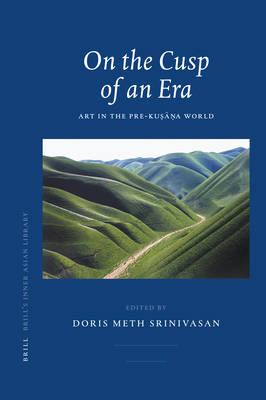
- Afhalen na 1 uur in een winkel met voorraad
- Gratis thuislevering in België vanaf € 30
- Ruim aanbod met 7 miljoen producten
- Afhalen na 1 uur in een winkel met voorraad
- Gratis thuislevering in België vanaf € 30
- Ruim aanbod met 7 miljoen producten
Zoeken
On the Cusp of an Era
Art in the Pre-Kuṣāṇa World
€ 442,95
+ 885 punten
Omschrijving
South Asian religious art became codified during the Kuṣāṇa Period (ca. beginning of the 2nd to the mid 3rd century). Yet, to date, neither the chronology nor nature of Kuṣāṇa Art, marked by great diversity, is well understood. The Kuṣāṇa Empire was huge, stretching from Uzbekistan through northern India, and its multicultural artistic expressions became the fountainhead for much of South Asian Art. The premise of this book is that Kuṣāṇa Art achieves greater clarity through analyses of the arts and cultures of the Pre- Kuṣāṇa World, those lands becoming the Empire. Fourteen papers in this book by leading experts on regional topography and connective pathways; interregional, multicultural comparisons; art historical, archaeological, epigraphic, numismatic and textual studies represent the first coordinated effort having this focus.
Specificaties
Betrokkenen
- Uitgeverij:
Inhoud
- Aantal bladzijden:
- 554
- Taal:
- Engels
- Reeks:
- Reeksnummer:
- nr. 18
Eigenschappen
- Productcode (EAN):
- 9789004154513
- Verschijningsdatum:
- 22/06/2007
- Uitvoering:
- Hardcover
- Formaat:
- Genaaid
- Afmetingen:
- 164 mm x 246 mm
- Gewicht:
- 1202 g

Alleen bij Standaard Boekhandel
+ 885 punten op je klantenkaart van Standaard Boekhandel
Beoordelingen
We publiceren alleen reviews die voldoen aan de voorwaarden voor reviews. Bekijk onze voorwaarden voor reviews.







